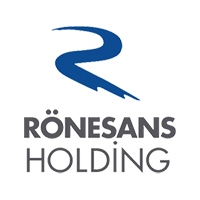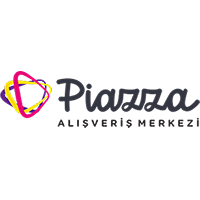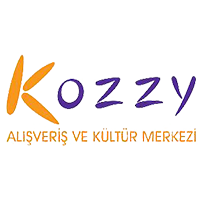BI7TECH is a technology transfer initiative dedicated to providing innovative and smart products and services in the healthcare sector. It has a strong product portfolio developed in collaboration with Yeditepe University and according to world-class standards. Continuously advancing R&D efforts to meet a wide range of medical needs, BI7TECH aims to be a pioneer in next-generation therapies. All research is conducted using patented technologies, with effectiveness proven through clinical studies. In research and development processes, BI7TECH aims to surpass existing standards by offering effective, user-friendly, and cost-efficient products and services, continuing to make a difference in the healthcare sector. At BI7TECH, we believe that the key to progress in cancer, infectious diseases, and other serious health issues lies in the immune system. With our expertise in immune system engineering, we focus on understanding and improving the fundamental processes that enable the immune system to recognize and effectively fight both external threats (such as pathogens) and cellular processes like cancer. By transforming this deep knowledge into innovative treatments, nutritional supplements, and preventive health solutions, we aim to improve individuals' quality of life and contribute to global health.
The efficacy of topical sodium pentaborate formulation on hemorrhoid disease: A randomized, double-blind, placebo-controlled trial
Background: The topical application of boron has been significantly associated with intensifying wound healing. Using 3% boric acid in deep wounds significantly contributes to wound healing and reduces the duration of hospitalization in the intensive care. The objective of this study was to assess the therapeutic impact of a topical gel containing sodium pentaborate pentahydrate on the management of wounds resulting from grade 1 to 3 hemorrhoids.
Methods: In this randomized double-blind placebo-controlled trial, we applied a topical gel consisting of sodium pentaborate pentahydrate 3% on 206 eligible patients with the diagnosis of grade 1, 2, and 3 hemorrhoid diseases. Then patients were randomly allocated to two groups of sodium pentaborate pentahydrate or placebo gel with a ratio of 1:1 and received the allocated gel for four weeks. Patient hemorrhoid symptoms severity, hemorrhoid degree, and anoscopy findings were compared before and after the trial.
Results: Before the intervention, symptom severity (p > 0.05) and anoscopy findings (p = 0.815) were similar between the two groups. Subsequent to the intervention, a majority of patients in the intervention group experienced a reduction in anal itching compared to the placebo group [adjusted mean difference (aMD) 95% CI: -1.98 (−2.2 to −1.8), p = 0.007]. Moreover, resting pain [aMD (95% CI): -1.37 (−1.6 to −1.1), p = 0.015], pain during defecation [aMD (95% CI): -2.19 (−2.4 to −2.0), p = 0.005], feeling a lump in the anus (aMD (95% CI): -0.71 (−1.2 to −0.2), p = 0.011), bleeding during defecation (41.7% vs. 66.9%, p = 0.027), and hemorrhoid degree (p < 0.001) in the intervention group was less than the placebo group.
Conclusion: Our findings indicate the effectiveness of the study gel on hemorrhoid symptoms and anoscopy findings in patients.
The effect of the boron-based gel on the treatment of diabetic foot ulcers: A prospective, randomized controlled trial
Background: Chronic diabetic foot ulcers have impaired healing and high mortality rates, especially in elderly patients or those with systemic conditions like diabetes. Boron has been shown to promote wound healing by aiding cell migration, proliferation, and reducing inflammation. This study aimed to evaluate the therapeutic effects of a sodium pentaborate-based topical gel on diabetic foot ulcers.
Methods: In this double-blind, randomized controlled trial, 161 participants aged 18-75 years with diabetic foot ulcers were randomly assigned to receive either sodium pentaborate gel (treatment group) or a conventional remedy (control group). Treatment was applied twice daily for one month, and participants were reassessed after 25 days and two months. Wagner's classification was used to assess ulcer severity.
Results: After treatment, participants in the sodium pentaborate gel group showed significant improvement in ulcer grade compared to the control group (adjusted mean difference: -0.91; p < 0.001). A higher proportion of the treatment group (90.8%) showed improvement compared to the control group (12.2%) (adjusted odds ratio: 0.008; p < 0.001). No recurrences occurred in the treatment group, while 40% of the control group experienced recurrence (p < 0.001).
Conclusion: Conclusion: Sodium pentaborate gel effectively reduces the grade of diabetic foot ulcers and prevents their recurrence.
The Preventive Effects of Boron-Based Gel on Radiation Dermatitis in Patients Being Treated for Breast Cancer: A Phase III Randomized, Double-Blind, Placebo-Controlled Clinical Trial
Introduction: Radiation dermatitis (RD) is a side effect of radiation therapy (RT) which is experienced by over 90% of patients being treated for breast cancer. The current clinical trial was conducted to measure the preventative effects of a boron-based gel on several different clinical outcomes (dermatitis, erythema, dry desquamation, and moist desquamation) after 25 radiotherapy sessions.
Methods: This research used a double-blind parallel-group design with a placebo control (n = 76) and randomized group (n = 181), with all participants being between 18 and 75 years old. Fifteen minutes before each radiotherapy session, participants in the intervention group were given a gel containing 3% sodium pentaborate pentahydrate, while those in the placebo group received a gel with no active substance. Clinical outcomes were compared between the two groups.
Results: At baseline, there were no significant differences between the groups (p > 0.05), except for body mass index. After 14 days of treatment, dermatitis (98.7% vs. 9.9%), erythema (96.1% vs. 12.2%), dry desquamation (50% vs. 3.9%), and moist desquamation (18.4% vs. 0.6%) were significantly more common in the placebo group (all p < 0.001). The number needed to treat (NNT) to prevent these conditions in one patient was 1.1, 1.2, 2.2, and 5.6, respectively.
Conclusion: The boron-based gel has a significant preventive effect on various forms of radiation dermatitis and may be considered for clinical use in patients undergoing radiotherapy for breast cancer.
Cancer is a devastating disease that affects millions of people every year and remains one of the largest health challenges globally. Acknowledging that each type of cancer is unique, we aim to develop immune-based treatments specific to each type of cancer. At Bi7Tech, we are developing advanced technology platforms to create precise and effective treatment options for various tumor types. Additionally, we are taking steps to protect individuals' health through nutritional supplements and immune-boosting solutions aimed at preventing cancer formation. With our innovative approach, we aim to redefine cancer treatment and achieve better outcomes for patients. Our in vivo and in vitro studies continue simultaneously on models of colon cancer, prostate cancer, cervical cancer, and small-cell lung cancer.
Background: Boron is an element commonly found in nature. The main boron source for organisms is through food and drinking water. In recent years, it is suggested that the “boron-rich diet” can affect human health positively. However, more detailed studies are needed.
Objective: The aim of this study was to examine the effect of increased dietary boron intake on some biochemical parameters in humans.
Material and methods: Thirteen healthy women consumed diets containing 10 mg more boron than their routine diet for one month. This boron intake was provided with the increase of boron-rich foods such as dried fruits, avocado, and nuts in the diet. Some biochemical and hematologic parameters were determined in blood, urine and saliva samples taken before and after a boron-rich diet.
Results: Serum, salivary, and urine boron concentrations increased 1.3, 1.7, 6.0 fold, respectively. The most significant clinically change was found in the lipid profile. Serum total, LDL, VLDL cholesterol, and triglyceride levels decreased significantly. Body weight, body fat weight, and Body Mass Index also decreased. Significant changes in serum TSH and salivary buffering capacity were also found.
Conclusion: Increasing the intake of boron through dietary means might contribute to beneficial effects on lipid metabolism, obesity, and thyroid metabolism; salivary boron may reflect serum boron; and boron may be used as a cariostatic agent in dentistry. An increased intake of other dietary factors such as fiber, potassium, iron, vitamin A, and vitamin E in the boron-rich foods might have been responsible of the effects described. To our knowledge, this study is the first clinical study in which dietary boron intake is increased via foods.
Background: Alzheimer's disease (AD) is a chronic, progressive neurodegenerative disorder characterized by cognitive decline, memory loss, and impaired reasoning. It is the leading cause of dementia in older adults, marked by the pathological accumulation of amyloid-beta plaques and neurofibrillary tangles. These pathological changes lead to widespread neuronal damage, significantly impacting daily functioning and quality of life.
Objective: This comprehensive review aims to explore various aspects of Alzheimer's disease, including its epidemiology, risk factors, clinical presentation, diagnostic advancements, management strategies, caregiving challenges, and emerging therapeutic interventions.
Methods: A systematic literature review was conducted across multiple electronic databases, including PubMed, MEDLINE, Cochrane Library, and Scopus, from their inception to May 2024. The search strategy incorporated a combination of keywords and Medical Subject Headings (MeSH) terms such as “Alzheimer's disease,” “epidemiology,” “risk factors,” “symptoms,” “diagnosis,” “management,” “caregiving,” “treatment,” and “novel therapies.” Boolean operators (AND, OR) were used to refine the search, ensuring a comprehensive analysis of the existing literature on Alzheimer's disease.
Results: AD is significantly influenced by genetic predispositions, such as the apolipoprotein E (APOE) ε4 allele, along with modifiable environmental factors like diet, physical activity, and cognitive engagement. Diagnostic approaches have evolved with advances in neuroimaging techniques (MRI, PET), and biomarker analysis, allowing for earlier detection and intervention. The National Institute on Aging and the Alzheimer's Association have updated diagnostic criteria to include biomarker data, enhancing early diagnosis.
Conclusion: The management of AD includes pharmacological treatments, such as cholinesterase inhibitors and NMDA receptor antagonists, which provide symptomatic relief but do not slow disease progression. Emerging therapies, including amyloid-beta and tau-targeting treatments, gene therapy, and immunotherapy, offer potential for disease modification. The critical role of caregivers is underscored, as they face considerable emotional, physical, and financial burdens. Support programs, communication strategies, and educational interventions are essential for improving caregiving outcomes. While significant advancements have been made in understanding and managing AD, ongoing research is necessary to identify new therapeutic targets and enhance diagnostic and treatment strategies. A holistic approach, integrating clinical, genetic, and environmental factors, is essential for addressing the multifaceted challenges of Alzheimer's disease and improving outcomes for both patients and caregivers.
Boron, a trace mineral found in foods such as fruits, leafy vegetables, and nuts, has been studied for its potential role in bone health. Some research suggests that boron may influence bone mineral density and play a role in bone metabolism. For instance, a pilot study involving postmenopausal women found that daily boron supplementation of 3 mg resulted in a significant reduction in urinary calcium excretion, which could be beneficial for bone health. Another review highlighted that boron supplementation might positively affect bone health by modulating calcium, vitamin D, and sex steroid hormone metabolism. The review suggested that a daily intake of 3 mg of boron could help maintain bone mineral density. While these studies show promising results, the exact mechanisms by which boron supports bone health are not fully understood, and more clinical research is needed to confirm its preventive benefits. In response to these findings, Bi7Tech has launched clinical research to explore the preventive effects of boron-based formulations on bone health. Our studies aim to assess the potential of boron in preventing osteoporosis and other bone-related conditions, contributing to the development of effective preventive strategies for maintaining bone health.
Topical wound healing therapy (TWT) – benign perianal diseases (hemorrhoidal disease, anal fissure, and perianal fistula)
The efficacy of topical sodium pentaborate formulation on hemorrhoid disease: A randomized, double-blind, placebo-controlled trial
Background: The topical application of boron has been significantly associated with intensifying wound healing. Using 3% boric acid in deep wounds significantly contributes to wound healing and reduces the duration of hospitalization in the intensive care. The objective of this study was to assess the therapeutic impact of a topical gel containing sodium pentaborate pentahydrate on the management of wounds resulting from grade 1 to 3 hemorrhoids.
Methods: In this randomized double-blind placebo-controlled trial, we applied a topical gel consisting of sodium pentaborate pentahydrate 3% on 206 eligible patients with the diagnosis of grade 1, 2, and 3 hemorrhoid diseases. Then patients were randomly allocated to two groups of sodium pentaborate pentahydrate or placebo gel with a ratio of 1:1 and received the allocated gel for four weeks. Patient hemorrhoid symptoms severity, hemorrhoid degree, and anoscopy findings were compared before and after the trial.
Results: Before the intervention, symptom severity (p > 0.05) and anoscopy findings (p = 0.815) were similar between the two groups. Subsequent to the intervention, a majority of patients in the intervention group experienced a reduction in anal itching compared to the placebo group [adjusted mean difference (aMD) 95% CI: -1.98 (−2.2 to −1.8), p = 0.007]. Moreover, resting pain [aMD (95% CI): -1.37 (−1.6 to −1.1), p = 0.015], pain during defecation [aMD (95% CI): -2.19 (−2.4 to −2.0), p = 0.005], feeling a lump in the anus (aMD (95% CI): -0.71 (−1.2 to −0.2), p = 0.011), bleeding during defecation (41.7% vs. 66.9%, p = 0.027), and hemorrhoid degree (p < 0.001) in the intervention group was less than the placebo group.
Conclusion: Our findings indicate the effectiveness of the study gel on hemorrhoid symptoms and anoscopy findings in patients.
Diabetic Foot Ulcer Healing with a Dermobor Anti-Wound Gel
The effect of the boron-based gel on the treatment of diabetic foot ulcers: A prospective, randomized controlled trial
Background: Chronic diabetic foot ulcers have impaired healing and high mortality rates, especially in elderly patients or those with systemic conditions like diabetes. Boron has been shown to promote wound healing by aiding cell migration, proliferation, and reducing inflammation. This study aimed to evaluate the therapeutic effects of a sodium pentaborate-based topical gel on diabetic foot ulcers.
Methods: In this double-blind, randomized controlled trial, 161 participants aged 18-75 years with diabetic foot ulcers were randomly assigned to receive either sodium pentaborate gel (treatment group) or a conventional remedy (control group). Treatment was applied twice daily for one month, and participants were reassessed after 25 days and two months. Wagner's classification was used to assess ulcer severity.
Results: After treatment, participants in the sodium pentaborate gel group showed significant improvement in ulcer grade compared to the control group (adjusted mean difference: -0.91; p < 0.001). A higher proportion of the treatment group (90.8%) showed improvement compared to the control group (12.2%) (adjusted odds ratio: 0.008; p < 0.001). No recurrences occurred in the treatment group, while 40% of the control group experienced recurrence (p < 0.001).
Conclusion: The boron-based gel has a significant preventive effect on various forms of radiation dermatitis and may be considered for clinical use in patients undergoing radiotherapy for breast cancer.
Preventive Effects of Boron-Based Gel on Radiation Dermatitis in Breast Cancer Patients
The Preventive Effects of Boron-Based Gel on Radiation Dermatitis in Patients Being Treated for Breast Cancer: A Phase III Randomized, Double-Blind, Placebo-Controlled Clinical Trial
Introduction: Radiation dermatitis (RD) is a side effect of radiation therapy (RT) which is experienced by over 90% of patients being treated for breast cancer. The current clinical trial was conducted to measure the preventative effects of a boron-based gel on several different clinical outcomes (dermatitis, erythema, dry desquamation, and moist desquamation) after 25 radiotherapy sessions.
Methods: This research used a double-blind parallel-group design with a placebo control (n = 76) and randomized group (n = 181), with all participants being between 18 and 75 years old. Fifteen minutes before each radiotherapy session, participants in the intervention group were given a gel containing 3% sodium pentaborate pentahydrate, while those in the placebo group received a gel with no active substance. Clinical outcomes were compared between the two groups.
Results: At baseline, there were no significant differences between the groups (p > 0.05), except for body mass index. After 14 days of treatment, dermatitis (98.7% vs. 9.9%), erythema (96.1% vs. 12.2%), dry desquamation (50% vs. 3.9%), and moist desquamation (18.4% vs. 0.6%) were significantly more common in the placebo group (all p < 0.001). The number needed to treat (NNT) to prevent these conditions in one patient was 1.1, 1.2, 2.2, and 5.6, respectively.
Conclusion: The boron-based gel has a significant preventive effect on various forms of radiation dermatitis and may be considered for clinical use in patients undergoing radiotherapy for breast cancer.
Evaluation of Patented Bor Compound in Oncological Applications Across Multiple Cancer Types
Cancer is a devastating disease that affects millions of people every year and remains one of the largest health challenges globally. Acknowledging that each type of cancer is unique, we aim to develop immune-based treatments specific to each type of cancer. At Bi7Tech, we are developing advanced technology platforms to create precise and effective treatment options for various tumor types. Additionally, we are taking steps to protect individuals' health through nutritional supplements and immune-boosting solutions aimed at preventing cancer formation. With our innovative approach, we aim to redefine cancer treatment and achieve better outcomes for patients. Our in vivo and in vitro studies continue simultaneously on models of colon cancer, prostate cancer, cervical cancer, and small-cell lung cancer.
Boron-rich diet may regulate blood lipid profile and prevent obesity: A non-drug and self-controlled clinical trial
Background: Boron is an element commonly found in nature. The main boron source for organisms is through food and drinking water. In recent years, it is suggested that the “boron-rich diet” can affect human health positively. However, more detailed studies are needed.
Objective: The aim of this study was to examine the effect of increased dietary boron intake on some biochemical parameters in humans.
Material and methods: Thirteen healthy women consumed diets containing 10 mg more boron than their routine diet for one month. This boron intake was provided with the increase of boron-rich foods such as dried fruits, avocado, and nuts in the diet. Some biochemical and hematologic parameters were determined in blood, urine and saliva samples taken before and after a boron-rich diet.
Results: Serum, salivary, and urine boron concentrations increased 1.3, 1.7, 6.0 fold, respectively. The most significant clinically change was found in the lipid profile. Serum total, LDL, VLDL cholesterol, and triglyceride levels decreased significantly. Body weight, body fat weight, and Body Mass Index also decreased. Significant changes in serum TSH and salivary buffering capacity were also found.
Conclusion: Increasing the intake of boron through dietary means might contribute to beneficial effects on lipid metabolism, obesity, and thyroid metabolism; salivary boron may reflect serum boron; and boron may be used as a cariostatic agent in dentistry. An increased intake of other dietary factors such as fiber, potassium, iron, vitamin A, and vitamin E in the boron-rich foods might have been responsible of the effects described. To our knowledge, this study is the first clinical study in which dietary boron intake is increased via foods.
Alzheimer's disease: a comprehensive review of epidemiology, risk factors, symptoms diagnosis, management, caregiving, advanced treatments and associated challenges
Background: Alzheimer's disease (AD) is a chronic, progressive neurodegenerative disorder characterized by cognitive decline, memory loss, and impaired reasoning. It is the leading cause of dementia in older adults, marked by the pathological accumulation of amyloid-beta plaques and neurofibrillary tangles. These pathological changes lead to widespread neuronal damage, significantly impacting daily functioning and quality of life.
Objective: This comprehensive review aims to explore various aspects of Alzheimer's disease, including its epidemiology, risk factors, clinical presentation, diagnostic advancements, management strategies, caregiving challenges, and emerging therapeutic interventions.
Methods: A systematic literature review was conducted across multiple electronic databases, including PubMed, MEDLINE, Cochrane Library, and Scopus, from their inception to May 2024. The search strategy incorporated a combination of keywords and Medical Subject Headings (MeSH) terms such as “Alzheimer's disease,” “epidemiology,” “risk factors,” “symptoms,” “diagnosis,” “management,” “caregiving,” “treatment,” and “novel therapies.” Boolean operators (AND, OR) were used to refine the search, ensuring a comprehensive analysis of the existing literature on Alzheimer's disease.
Results: AD is significantly influenced by genetic predispositions, such as the apolipoprotein E (APOE) ε4 allele, along with modifiable environmental factors like diet, physical activity, and cognitive engagement. Diagnostic approaches have evolved with advances in neuroimaging techniques (MRI, PET), and biomarker analysis, allowing for earlier detection and intervention. The National Institute on Aging and the Alzheimer's Association have updated diagnostic criteria to include biomarker data, enhancing early diagnosis.
Conclusion: The management of AD includes pharmacological treatments, such as cholinesterase inhibitors and NMDA receptor antagonists, which provide symptomatic relief but do not slow disease progression. Emerging therapies, including amyloid-beta and tau-targeting treatments, gene therapy, and immunotherapy, offer potential for disease modification. The critical role of caregivers is underscored, as they face considerable emotional, physical, and financial burdens. Support programs, communication strategies, and educational interventions are essential for improving caregiving outcomes. While significant advancements have been made in understanding and managing AD, ongoing research is necessary to identify new therapeutic targets and enhance diagnostic and treatment strategies. A holistic approach, integrating clinical, genetic, and environmental factors, is essential for addressing the multifaceted challenges of Alzheimer's disease and improving outcomes for both patients and caregivers.
Exploring the Potential of Boron-Based Pharmaceutical in Osteoporosis Treatment and Management
Boron, a trace mineral found in foods such as fruits, leafy vegetables, and nuts, has been studied for its potential role in bone health. Some research suggests that boron may influence bone mineral density and play a role in bone metabolism. For instance, a pilot study involving postmenopausal women found that daily boron supplementation of 3 mg resulted in a significant reduction in urinary calcium excretion, which could be beneficial for bone health. Another review highlighted that boron supplementation might positively affect bone health by modulating calcium, vitamin D, and sex steroid hormone metabolism. The review suggested that a daily intake of 3 mg of boron could help maintain bone mineral density. While these studies show promising results, the exact mechanisms by which boron supports bone health are not fully understood, and more clinical research is needed to confirm its preventive benefits. In response to these findings, Bi7Tech has launched clinical research to explore the preventive effects of boron-based formulations on bone health. Our studies aim to assess the potential of boron in preventing osteoporosis and other bone-related conditions, contributing to the development of effective preventive strategies for maintaining bone health.
Biotechnology
BI7TECH develops products that will contribute to the quality of life at the highest level in all areas of life, by using modern biotechnology methods, evaluating national assets with technology and taking into account human health as the most important asset.
Innovation
With the driving force of innovation, BI7TECH offers creative solutions with developed and differentiated patented products to provide a better future in every aspect of life.
R&D
The final commercial byproducts of BI7TECH are obtained through research and clinical studies carried out in the exceedingly equipped laboratories of Yeditepe University, one of the most renown universities in Turkey.
Health
BI7TECH offers all the resources that will enable an individual to lead a socially and economically productive life while taking all the systems and structures in their physical environment into consideration. Individual and community health and welfare is a priority within our service model.










